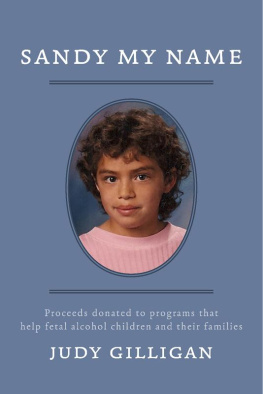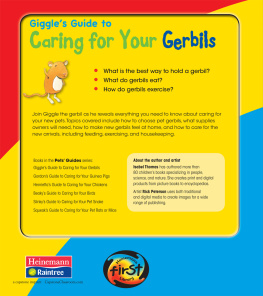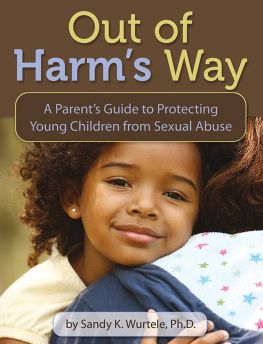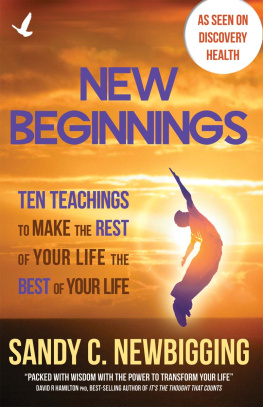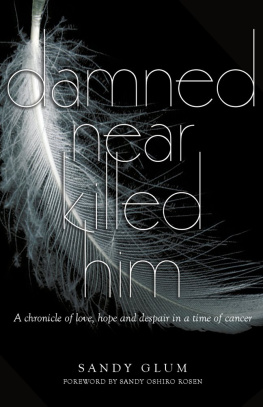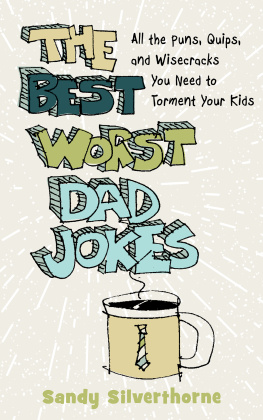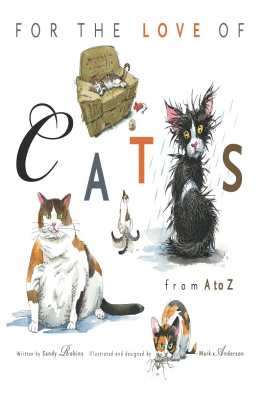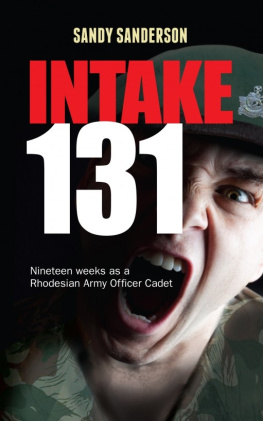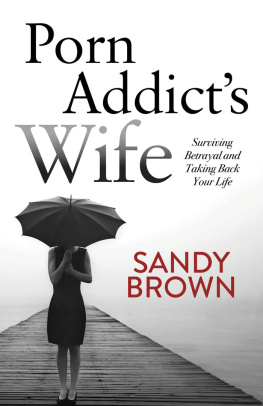
ISBN: 9781624887536
HOW I CAME TO WRITE THIS BOOK
This is the story of my family, a memoir of our life with Sandy, a foster child who we discovered only after many years suffered from fetal alcohol exposure. Her life exemplifies the cruel reality behind the surgeon generals warning on liquor bottles: Pregnant women should not drink because of the risk of birth defects. This is the story of the interweaving of our lives, the wrenching open of our hearts, and in the end, of the surprising and transformative power of love.
We started down the path of foster parenting for a variety of reasons. My husband Ron and I wanted to do something positive, but we also wanted to have a third child without another bed rest pregnancy. We hoped our two young children would learn compassion. But more essentially, I sought a constructive diversion from my mothers slow, alcoholic demise, because I knew I wouldnt be able to save her.
It was from these beginnings that our journey evolved, and before long there was no turning back. Surely, I could do this, so said my own deepest need. So said the zeitgeist of the 1980s: environment was everything--a loving and intellectually stimulating home could help make up for even the worst of early childhood deficits. Besides, wouldnt we have help? And werent we all bobbing on uncharted seas? Perhaps in just a little over our heads? Where taking a risk just might make all the difference?
At the time most people knew little of the insidious effect of stress and substances on a childs developing brain. No one suspected that alcohol could be more harmful than drugs.
And so we set off into the world of foster care, into the world of brain damage, of too little too late, into the world of disposable children. It chewed us up and spit us out, humbled and changed. It made us acutely aware of the damage people so carelessly inflict upon children. It made us more human.
Our first foster child stayed only a week; Sandy stayed eighteen years. Her story does not gloss over my own imperfections. Along the way I lost my temper plenty of times. And later, when things got worse, I was convinced wed failed completely. But it turns out theres something to simply sticking with it. Something to trying until you have no more to give and youre left standing, palms turned outward, and theres only forgiveness and some true, stripped-down, no-expectations bond of love, which is everything.
The short answer to why this book? I wrote it because I had to.
There was a little girl, who had a little curl,
Right in the middle of her forehead.
--Henry Wadsworth Longfellow
1. FIVE BANANAS
When she arrived on the morning of July 23, 1987, Sandy was wearing a green gingham dress with a ruffled, white pinafore. She was a big girl for two and a half with golden skin and hazel eyes. Her wispy, brown hair was pulled into a ponytail on top of her head. Stray tendrils framed her chubby face.
The social worker made introductions.
Hi Sandy, I said, kneeling and taking her hands, were glad youre here.
She regarded me with large eyes under thick brows. I squeezed her hands and smiled, wanting to ease the transition to this, her new temporary home.
Our children Sam and Molly, ages seven and four, greeted her with excited giggles.
Sandys gaze wandered past us to the kitchen and adjoining family room, taking stock like a wary fawn.
Would you like to see our toys? I asked.
Sam and Molly took Sandys hands and guided her toward the family room. Come on, Sandy, in here.
The social worker tilted her head toward me and spoke in a confidential tone. Shes been removed before. The family came to our attention when they took baby brother to the emergency room six months ago. Theyd stopped feeding him, since he was colicky with milk allergies. He almost died--hes been in foster care ever since.
I took a breath, letting this register as the social worker continued.
Last winter Sandy was sick all the time. Parents were heating the apartment with the oven, when they were around. And now, she shook her head, Moms taking off again, leaving Sandy with this and that person--friends, relatives. Doesnt come back for days. But oh, I wish you could have seen, Sandy was so sweet when I picked her up at the shelter. She went around giving everyone big hugs and kisses. We dont know where the dad is.
As I tried to incorporate this hodgepodge of information, the social worker handed me a brown paper bag of Sandys possessions: a few random items of childrens clothing too big or too small, a fine-toothed black comb, a mans stained white tee shirt. I imagined these things hastily assembled for her, a small child being removed from her home.
You can count on about three weeks, the social worker said, repeating what theyd told us when Ron and I had agreed to take Sandy. She does have a speech delay, but otherwise seems to be developing normally. We hope Mom will complete the parenting course; its part of the court order. Lacy isnt very reliable, but we dont think shes involved with drugs or alcohol.
Well, I thought, that was one good thing.
From the doorway the social worker observed Sandy, who was bent over the toy basket, examining items as Sam and Molly named them.
Ill check on you in a couple of days, the social worker said, turning to leave, and if you could return the outfit--it belongs to the shelter.
I would have to get used to the ways of Social Services.
After she slipped out, I went into the family room, where Sandy had warmed to her very tactile exploration. She rubbed our cat, pounded on the coffee table, and dragged her palms along the sliding glass door with a squeaky sound. Sam and Molly imitated her, making a game.
Hey, kids, I said, wanting to distract them from making more streaky fingerprints, lets go outside!
Gardens surrounded our yellow, suburban ranch house. The sky extended blue and clear from horizon to horizon. Cedar trees and the irrigated vegetation of crops in the fields behind us perfumed the air. I was lucky to be able to leave my elementary school teaching job to stay home with the children while they were young. Ron and I felt we had everything we needed and some to share.
When Sandy noticed the swing set, she rushed toward it with an uneven gait and wriggled onto one of the blue plastic sling seats. Molly gave her gentle pushes, giggling in delight and looking back at me to share the excitement. Sam swung attentively in the swing beside her.
After a few minutes, Sandy whimpered to get off. Sam and Molly helped her down and guided her around the yard, showing her the slide, the sunflowers, the little pill bugs hiding under rocks. A white cabbage moth fluttered above their heads in the sunlight before disappearing over the fence.
Eventually they made their way to the sandbox, a cool oasis beneath the neighbors overhanging trees. Sandy scrambled in and set to work heaping buckets with sand. Sam and Molly demonstrated the possibilities of the rake and sifter.
Look, Sandy, see?
Sandy copied their motions.
It was the picture Id been hoping for.
Sam, with his soft brown eyes and blond buzz, soothed Sandy with his accepting attention. Creative and quietly humorous, he occupied the seat of senior kid of the household.
Molly, a small, cheerful chatterbox, embraced the role of big sister.
Yes, you may have one of my nightgowns, Molly sang to Sandy that evening. I love how sweet you are. Her long blonde hair contrasted with Sandys thin brown curls as the two girls bent over the open drawer.
I had sewn the nightgowns especially for Molly. With tiny flowers and ruffled hems, they were her favorites, but she gave one easily, for she had two and Sandy had none. She was overjoyed with the idea of having a sister, even for just a while.
Next page
